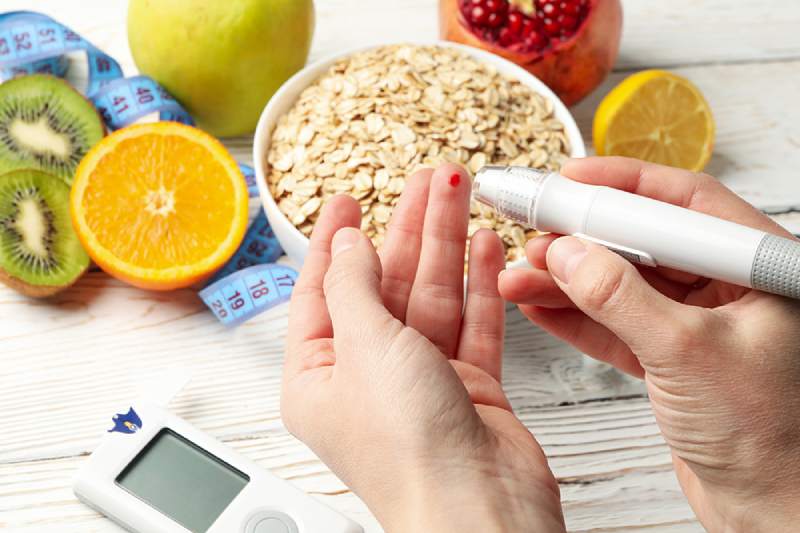Introduction
Prediabetes is a serious health condition where blood sugar levels are higher than normal but not yet high enough to be diagnosed as type 2 diabetes. If left unaddressed, it can progress into diabetes, increasing the risk for heart disease and other complications. However, with early intervention and lifestyle changes, the progression from prediabetes to diabetes is preventable. In this article, we’ll discuss the key risk factors for prediabetes and provide actionable strategies to help reduce your risk.
1. What is Prediabetes?
- Definition: Prediabetes occurs when blood sugar levels are elevated but not high enough to qualify for a diabetes diagnosis. This stage can last for years without noticeable symptoms, which is why regular screenings are important.
- The Link to Type 2 Diabetes: Without intervention, prediabetes can develop into type 2 diabetes, a chronic condition with more serious health risks.
2. Recognizing the Risk Factors for Prediabetes
- Family History of Diabetes: A close relative with type 2 diabetes increases your chances of developing prediabetes. Genetic factors play a role in insulin resistance, which can lead to prediabetes.
- Being Overweight: Excess body fat, particularly around the abdomen, can contribute to insulin resistance. A higher BMI is a significant risk factor for developing prediabetes.
- Physical Inactivity: A lack of exercise or sedentary lifestyle reduces the body’s ability to use insulin effectively, increasing the likelihood of developing prediabetes.
- Age: Individuals over 45 years of age are at higher risk for prediabetes. This risk increases with age, particularly if you are overweight or inactive.
- Unhealthy Diet: A diet high in refined sugars, processed foods, and unhealthy fats can lead to weight gain and insulin resistance, which increases the risk of prediabetes.
- High Blood Pressure and High Cholesterol: Conditions like hypertension and high cholesterol are linked to a higher risk of developing prediabetes.
- Gestational Diabetes: If you had gestational diabetes during pregnancy, your chances of developing prediabetes or type 2 diabetes later in life are higher.
3. Reducing Your Risk: Lifestyle Changes That Make a Difference
- Adopt a Healthy, Balanced Diet:
- Focus on Whole Foods: A diet rich in vegetables, fruits, lean proteins, and whole grains helps maintain stable blood sugar levels.
- Limit Processed Carbs and Sugars: Avoid sugary drinks, snacks, and processed carbs that can spike blood sugar levels.
- Incorporate Healthy Fats: Avocados, nuts, seeds, and olive oil provide healthy fats that support overall metabolic health.
- Portion Control: Eating smaller, balanced meals throughout the day helps prevent blood sugar spikes and encourages healthy weight management.
- Get Moving:
- Aim for Regular Exercise: Physical activity increases insulin sensitivity and helps control blood sugar levels. Aim for at least 150 minutes of moderate exercise each week, such as brisk walking, cycling, or swimming.
- Strength Training: Incorporating resistance training 2-3 times a week can improve muscle mass and help control blood sugar.
- Maintain a Healthy Weight:
- Lose Excess Weight: Even a modest weight loss of 5-10% of your body weight can significantly reduce your risk of prediabetes progressing to diabetes.
- Track Your Progress: Keep track of your weight and body measurements, and set small, achievable goals for weight loss.
- Get Regular Screenings:
- Monitor Your Blood Sugar: Regular blood glucose checks can detect elevated blood sugar levels early. If you’re at high risk for prediabetes, ask your doctor to check your A1C levels.
- Know Your Numbers: Knowing your blood pressure, cholesterol levels, and BMI can help you monitor your overall health and take proactive steps to reduce your risk.
4. Other Key Strategies for Preventing Prediabetes
- Manage Stress: Chronic stress increases cortisol levels, which can contribute to higher blood sugar. Practice stress-relieving activities like yoga, meditation, deep breathing, or spending time in nature.
- Prioritize Sleep: Poor sleep or sleep deprivation can increase insulin resistance. Aim for 7-9 hours of quality sleep each night to support metabolic health.
- Quit Smoking: Smoking increases the risk of insulin resistance and can raise blood sugar levels, making it harder for your body to control blood sugar.
5. When to Seek Professional Guidance
- If you have risk factors such as a family history of diabetes, are overweight, or have high blood pressure, speak to your healthcare provider about your risk for prediabetes. Early screening and intervention can help reduce your risk and avoid complications.
Conclusion
Recognizing and addressing the risk factors for prediabetes is the first step in preventing the progression to type 2 diabetes. By making healthier lifestyle choices such as eating a balanced diet, exercising regularly, managing stress, and maintaining a healthy weight, you can take control of your health and reduce your risk. Remember, small changes today can have a lasting impact on your future health. Be proactive, stay informed, and consult your healthcare provider to monitor your progress and make the best choices for your well-being.

 Diabetology2 weeks ago
Diabetology2 weeks ago
 Diabetology1 week ago
Diabetology1 week ago
 Diabetology5 days ago
Diabetology5 days ago
 Diabetology7 days ago
Diabetology7 days ago
 Diabetology7 days ago
Diabetology7 days ago
 Diabetology3 days ago
Diabetology3 days ago
 Diabetology3 days ago
Diabetology3 days ago
 Diabetology1 day ago
Diabetology1 day ago














